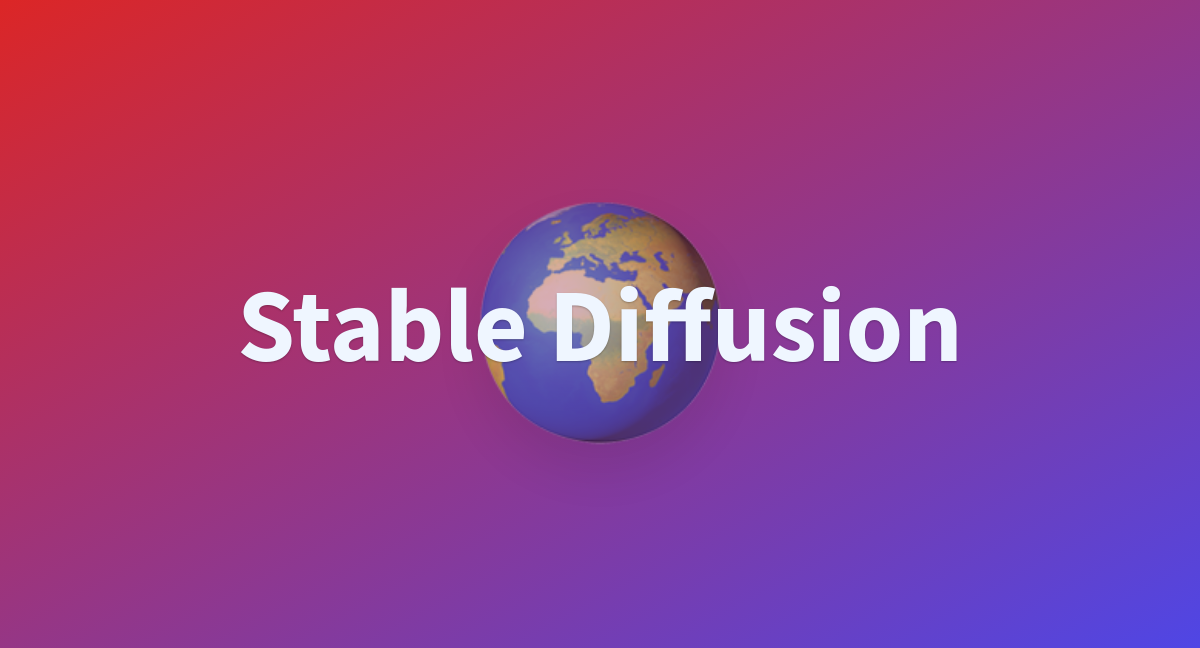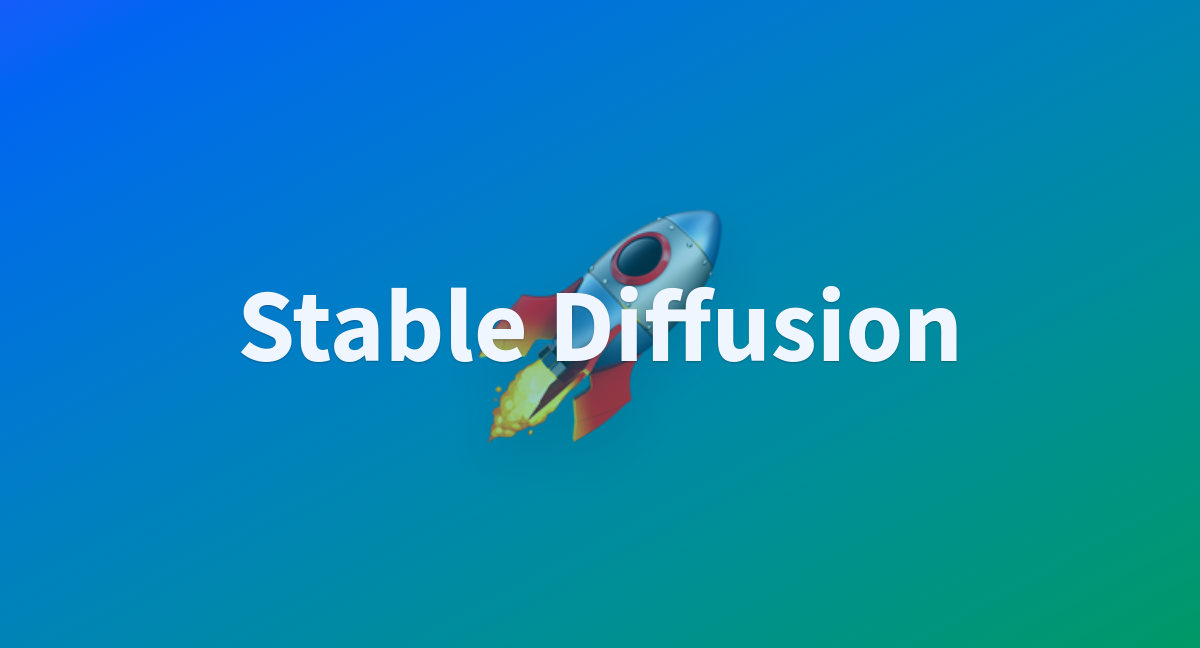Alright folks, let’s dive right into the world of Stable Diffusion tools because this is where creativity meets cutting-edge technology. If you're here, chances are you've heard about Stable Diffusion and its incredible capabilities. But what exactly are these tools, and how can they revolutionize the way we create art, design, or even generate content? Let me tell you, it’s not just hype—this stuff is game-changing. So, grab your coffee, get comfy, and let’s unravel the magic behind Stable Diffusion tools!
Now, imagine having access to a powerful AI-driven system that can turn your wildest ideas into stunning visuals. That’s exactly what Stable Diffusion tools offer. Whether you're an artist, designer, developer, or simply someone curious about AI-generated art, these tools are worth exploring. They’ve been making waves across industries, and for good reason. In this article, we’ll break down everything you need to know about Stable Diffusion tools, from their basics to advanced applications.
But wait, before we jump into the nitty-gritty details, let’s set the stage. Stable Diffusion itself is an open-source AI model designed to generate high-quality images based on text prompts. The tools built around this model take that capability to the next level, offering users more control, flexibility, and creativity. Stick with me, because by the end of this article, you’ll be equipped with all the knowledge you need to start using these tools like a pro.
What Are Stable Diffusion Tools Anyway?
Let’s get one thing straight—Stable Diffusion tools aren’t just random software; they’re carefully crafted instruments designed to harness the power of the Stable Diffusion model. These tools allow users to generate, edit, and refine images with unprecedented precision. Think of them as the Swiss Army knife of AI art generation. From creating photorealistic landscapes to designing futuristic concepts, the possibilities are endless.
Here’s why Stable Diffusion tools stand out:
- They’re highly customizable, allowing users to tweak settings for unique results.
- They support a wide range of formats, making integration into various projects seamless.
- They’re user-friendly, catering to both beginners and experts alike.
So whether you’re a seasoned artist looking to enhance your workflow or a newcomer eager to explore AI art, these tools have something for everyone. And hey, who wouldn’t want to play around with technology that turns imagination into reality?
How Do Stable Diffusion Tools Work?
Alright, let’s talk tech for a moment. Stable Diffusion tools work by leveraging the underlying Stable Diffusion model, which uses a process called diffusion to generate images. Here’s how it goes: the model starts with random noise and gradually refines it based on the input prompt until it produces a coherent image. It’s kinda like sculpting, but instead of chisels and marble, you’ve got algorithms and data.
Key Features:
- Prompt-Based Generation: You provide the text prompt, and the tool generates an image based on it.
- Customization Options: Adjust parameters like resolution, style, and seed values to fine-tune your output.
- Batch Processing: Generate multiple images at once, saving you time and effort.
And the best part? Many of these tools come with intuitive interfaces that make the whole process accessible even to those without a technical background. So don’t worry if you’re not a coder—these tools are designed to be as user-friendly as possible.
Why Should You Care About Stable Diffusion Tools?
Let me ask you this: Have you ever struggled to bring your creative visions to life? Maybe you’ve had an idea for a piece of art or a design concept, but lacked the skills or resources to execute it. That’s where Stable Diffusion tools come in. They empower creators by bridging the gap between imagination and execution.
Consider this: traditional art creation often requires years of practice and specialized tools. With Stable Diffusion tools, you can achieve similar results in a fraction of the time, all while learning and experimenting along the way. Plus, they open up new avenues for collaboration, allowing artists, designers, and developers to work together in ways previously unimaginable.
Not to mention, these tools are increasingly being adopted across industries, from marketing and advertising to gaming and film production. If you’re looking to stay ahead of the curve, mastering Stable Diffusion tools could be your ticket to success.
Popular Stable Diffusion Tools You Need to Know
Now that we’ve established why Stable Diffusion tools are a big deal, let’s look at some of the most popular ones on the market. Each tool has its own strengths and features, so it’s worth exploring a few to see which ones suit your needs best. Here’s a quick rundown:
1. Automatic1111
Automatic1111 is one of the most beloved Stable Diffusion tools out there. Known for its simplicity and power, it’s perfect for beginners and experts alike. With features like image-to-image generation, batch processing, and advanced customization options, it’s no wonder so many people swear by it.
2. ComfyUI
ComfyUI takes things up a notch with its node-based interface. This allows users to create complex workflows and experiment with different combinations of settings. It’s ideal for those who want more control over their creations.
3. Stable Diffusion WebUI
The Stable Diffusion WebUI is another great option, especially for those who prefer a web-based solution. It offers a clean and intuitive interface, making it easy to dive right in without much setup hassle.
4. DreamStudio
DreamStudio, powered by MidJourney, provides a polished and professional-grade platform for AI art generation. While it’s not entirely focused on Stable Diffusion, it integrates seamlessly with the model, offering a robust set of features for creators.
Getting Started with Stable Diffusion Tools
Ready to jump in? Great! Here’s a step-by-step guide to help you get started with Stable Diffusion tools:
- Choose Your Tool: Pick a tool that aligns with your skill level and project requirements.
- Set Up Your Environment: Depending on the tool, you may need to install software or access it via a web browser.
- Experiment with Prompts: Start with simple prompts and gradually increase complexity as you get comfortable.
- Refine Your Output: Use customization options to fine-tune your results until you’re satisfied.
- Save and Share: Once you’ve created something you love, save it and share it with the world!
Remember, practice makes perfect. The more you experiment with Stable Diffusion tools, the better you’ll become at leveraging their full potential.
Applications of Stable Diffusion Tools Across Industries
Stable Diffusion tools aren’t just for artists; they’ve found applications across a wide range of industries. Let’s take a closer look at how different sectors are benefiting from this technology:
1. Marketing & Advertising
Companies are using Stable Diffusion tools to create eye-catching visuals for campaigns, reducing reliance on expensive photo shoots and stock images.
2. Gaming
Game developers are employing these tools to generate assets quickly and efficiently, speeding up the production pipeline.
3. Film & Animation
Stable Diffusion tools are being used to prototype scenes and characters, helping filmmakers visualize their ideas before committing to costly production processes.
4. Education
Teachers and educators are incorporating AI-generated visuals into their lessons, making learning more engaging and interactive.
As you can see, the versatility of Stable Diffusion tools makes them a valuable asset in virtually any field that involves visual content creation.
Challenges & Limitations of Stable Diffusion Tools
While Stable Diffusion tools are undeniably powerful, they’re not without their challenges. Here are a few things to keep in mind:
- Learning Curve: Some tools, especially those with advanced features, can be overwhelming for beginners.
- Resource Intensive: Running these tools often requires powerful hardware, which might not be accessible to everyone.
- Ethical Concerns: As with any AI technology, there are ethical considerations around copyright, bias, and misuse.
That said, many of these challenges can be mitigated with proper education and responsible usage. It’s all about finding the right balance between creativity and responsibility.
Future Trends in Stable Diffusion Tools
So where is this technology headed? The future of Stable Diffusion tools looks incredibly promising. We can expect to see advancements in areas like:
- Improved Accuracy: Enhanced models capable of producing even more realistic and detailed images.
- Increased Accessibility: Tools that require less computational power, making them available to a wider audience.
- Integration with Other Technologies: Seamless integration with AR/VR platforms, enabling immersive experiences.
As AI continues to evolve, so too will the tools built around it. Exciting times lie ahead for creators and innovators alike!
Conclusion: Embrace the Power of Stable Diffusion Tools
There you have it, folks—a comprehensive look at Stable Diffusion tools and their incredible potential. Whether you’re an artist, designer, or just someone curious about AI-generated art, these tools offer endless possibilities for creativity and innovation. By now, I hope you’ve gained a deeper understanding of what they can do and how they can benefit you.
So what are you waiting for? Dive in, explore, and let your imagination run wild. And don’t forget to share your creations with the world—after all, that’s what makes the creative journey so rewarding. Until next time, keep creating, keep learning, and keep pushing boundaries!
Table of Contents
Stable Diffusion Tools: Your Ultimate Guide to Unlocking Creative Potential
What Are Stable Diffusion Tools Anyway?
How Do Stable Diffusion Tools Work?
Why Should You Care About Stable Diffusion Tools?
Popular Stable Diffusion Tools You Need to Know
Getting Started with Stable Diffusion Tools
Applications of Stable Diffusion Tools Across Industries
Challenges & Limitations of Stable Diffusion Tools


